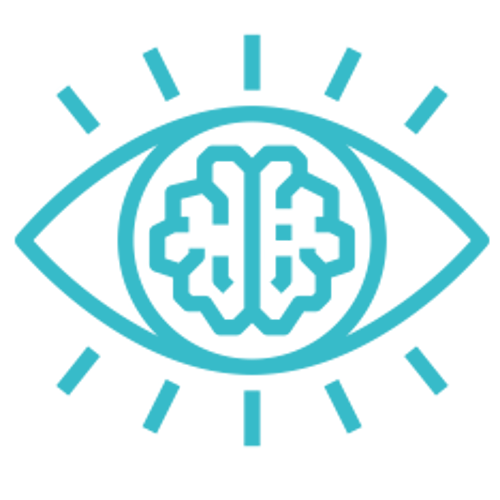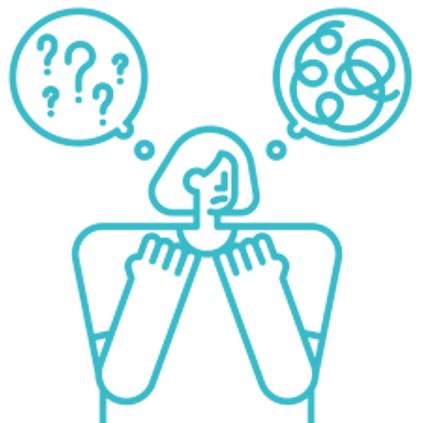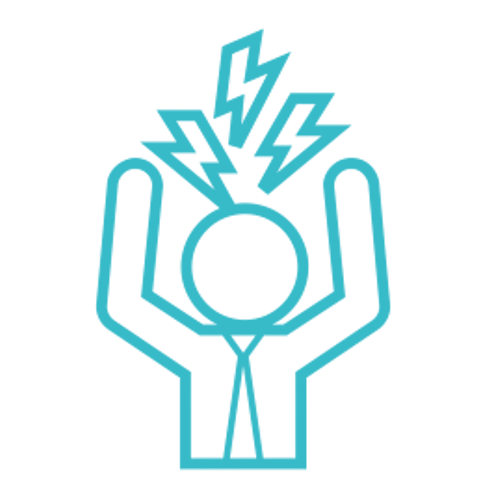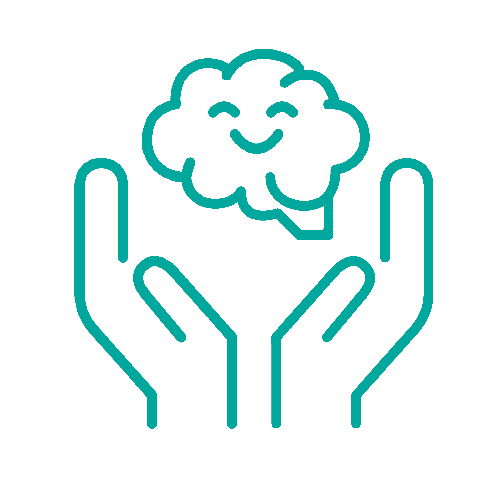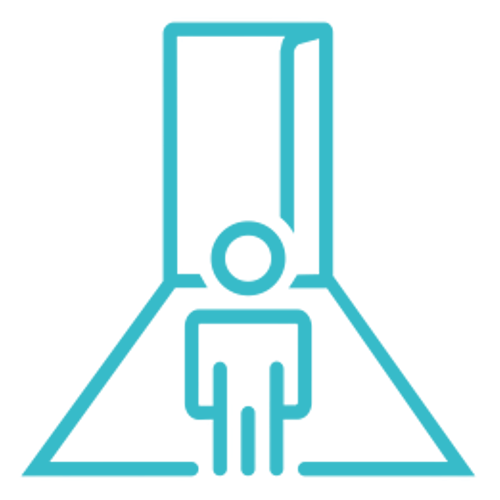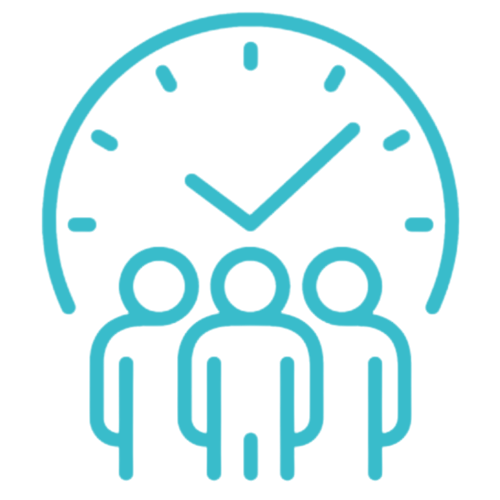In the complex web of human well-being, the connection between mental and physical health is a fundamental thread that runs through every aspect of our lives. It’s a bridge that links not just our minds but our bodies too. In this blog, we set out to explore how mental health influences our physical well-being in meaningful ways. We’ll dive into the real, tangible physical effects that can arise from conditions like anxiety, PTSD, ADHD, and grief.
How Does Mental Health Impact Physical Health
You’ve probably heard the age-old adage, “Mind over matter.” While it might sound like a catchy phrase or a line from a self-help book, it encapsulates a profound truth about the intricate relationship between your mind and body. This connection isn’t just some abstract concept; it’s a tangible and scientifically validated phenomenon.
Physical Symptoms of Anxiety
How does mental health impact physical health when it comes to anxiety? Life can throw some unexpected curveballs our way, and it’s completely normal to feel anxious from time to time. However, when that anxiety starts to take a toll on your body, it’s essential to pay attention. Anxiety is more than just a feeling; it can manifest in physical ways too. Paying attention to these physical symptoms from anxiety is crucial because they are your body’s way of signaling that something is amiss. While it’s essential to address the root causes of anxiety, understanding these physical signs can help you take proactive steps to manage it better. Here are some examples of physical signs where your body is releasing trauma.
Racing Heartbeat:
Imagine sitting quietly, perhaps reading a book or watching TV, when suddenly, your heart feels like it’s in a race. It’s a startling sensation, isn’t it? Your heart pounding vigorously is more than just a palpitation; it’s your body’s primal response in action. This is the “fight or flight” response, a mechanism hardwired into us from ancient times when we needed to be alert to potential dangers.
Picture a caveman sensing a lurking predator. In that moment, their heart would race to pump more blood, more oxygen, and more nutrients to the muscles, preparing the body to either confront the threat or flee from it. Your racing heart during anxiety is akin to this, though in modern times, the threats are often not physical but rather emotional or psychological. Your body is telling you, “Hey, we need to be ready for something!” It’s a physiological reminder that your mind perceives a situation as stressful or threatening.
Shortness of Breath:
When anxiety takes hold, and you suddenly find yourself gasping for air, it can be a frightening experience. It’s as if your body has forgotten how to breathe normally. This shortness of breath occurs because your body is on high alert, anticipating danger and is a physical symptom of anxiety.
Consider this: if you were in a potentially perilous situation, your body would need an extra surge of oxygen to fuel your muscles for a quick escape. Your breath becomes shallow and rapid to maximize the intake of oxygen. The catch is, in the context of modern life, there’s often no actual danger. Your body, however, is just doing what it evolved to do—preparing for a threat that might not be there.
Muscle Tension:
Have you ever noticed that during moments of intense stress or anxiety, your muscles feel tight and tense? Maybe it’s the knots in your shoulders or the clenching of your jaw. This physical tension is like an unspoken language of your body, signaling that something is amiss in your emotional state.
Imagine yourself in a situation where you feel immense pressure. Your muscles tense up in readiness for action, as if preparing for a physical challenge. In the context of anxiety, this physical response occurs even when there’s no need for a physical fight or flight. It’s your body’s way of trying to protect you, but sometimes, it can be counterproductive when there’s no real threat to confront.
Upset Stomach:
When anxiety takes a toll on your digestive system, it can feel like a rollercoaster ride for your gut. You might experience stomach aches, nausea, or even diarrhea. These symptoms arise because anxiety can throw your digestive processes out of balance.
Imagine your digestive system as a delicate ecosystem. When stress hormones flood your body, they can disrupt the normal functioning of your stomach and intestines. It’s like your gut is trying to tell you, “Hey, something’s not quite right here.” This physical symptom from anxiety serves as a reminder that emotional wellbeing is intimately connected to your physical health.
Sweating:
Suddenly breaking into a sweat, even in a cool room, can be an uncomfortable experience. Anxiety-induced sweating is your body’s way of grappling with temperature regulation.
Think about it like this: when your body gears up for a fight or flight response, it needs to cool down quickly to avoid overheating during potential physical exertion. So, it triggers sweat glands to help regulate your temperature. The result? Unwanted perspiration in situations where physical exertion is not warranted.
Trembling or Shaking:
Have you ever felt your hands or other parts of your body trembling or shaking uncontrollably when you’re anxious? It’s as though your body is releasing extra energy in response to a perceived threat.
Imagine a coiled spring suddenly released—it vibrates with pent-up energy. In anxiety, your body is the spring, and the trembling or shaking is a way to discharge some of that anxious energy. It’s an involuntary reaction, a physical manifestation of your heightened emotional state.
Dizziness:
Feeling lightheaded or dizzy during anxiety is like navigating unsteady ground. Anxiety can affect your blood pressure and circulation, leading to that wobbly sensation.
Think of it this way: your body’s response to stress can cause a shift in blood flow, diverting it away from certain areas to prepare for the “fight or flight” response. This can result in a temporary drop in blood pressure, leading to dizziness. It’s your body’s way of saying, “We’re ready to move quickly if we need to.”
Insomnia:
Anxiety and sleep troubles are frequent companions. Those racing thoughts, the constant worry, and the restlessness can keep you tossing and turning all night, leaving you feeling exhausted during the day.
Imagine your mind as a bustling city that never sleeps, with thoughts racing like cars on a freeway. When anxiety takes hold, it’s like the city has no traffic lights, no rest. Sleep, however, requires a calm, relaxed mind. Anxiety disrupts that tranquility, making it challenging to slip into restorative slumber.
Physical Symptoms of PTSD
How does mental health impact physical health when it comes to PTSD? Life can throw us into situations that leave lasting imprints on our minds and bodies. Post-Traumatic Stress Disorder (PTSD) is one such invisible battle that many people face. Beyond the emotional and psychological toll, physical symptoms of PTSD are often misunderstood or overlooked. The physical symptoms of PTSD are real and impactful, affecting a person’s overall quality of life. Recognizing these symptoms is essential, as it can lead to early intervention and appropriate treatment.
Flashbacks and Nightmares:
Imagine a vivid movie playing in your mind, one you can’t control, pause, or turn off. For individuals with PTSD, this is often the reality when they experience flashbacks and nightmares related to their traumatic event. These experiences are not mere memories; they are immersive and overwhelming, making it feel like you’re trapped in the past.
Physically, these episodes trigger intense emotions akin to reliving the trauma itself. Your heart races, pounding like a drum in your chest, while your body may break into a cold sweat. It’s as though your body is thrust back into the traumatic moment, making it incredibly challenging to distinguish between past and present. The boundaries blur, and the emotional and physical responses are a haunting reminder of the past trauma.
Hypervigilance:
Imagine living in a constant state of alertness, like a sentinel standing guard, always on the lookout for danger. This is the state of hypervigilance that often accompanies PTSD. Your senses are on high alert, scanning your surroundings for potential threats, even in seemingly safe environments.
This heightened state of vigilance takes a toll on the body. Muscles remain tense, ready to spring into action at a moment’s notice. The ongoing vigilance can lead to persistent muscle tension, resulting in headaches and a perpetual sense of fatigue. It’s a physical manifestation of the mind’s inability to let go of the trauma, maintaining a state of readiness for a perceived danger that may never materialize.
Sleep Disturbances:
Imagine going to bed, hoping for a night of restful slumber, only to be plagued by night sweats, restless legs, or an inability to fall asleep. For those with physical symptoms of PTSD, sleep disturbances are a nightly ordeal.
Night sweats drench the sheets, leaving you clammy and uncomfortable. Restless legs seem to have a mind of their own, making it impossible to find rest. Insomnia becomes a cruel companion, keeping you awake in the silent hours of the night. These sleep disturbances lead to physical exhaustion, compounding the mental fatigue already associated with PTSD.
Startle Response:
Imagine being on edge at all times, ready to leap into action at the slightest unexpected noise or touch. This is the exaggerated startle response that people with PTSD often experience. A sudden loud noise or an unexpected touch can jolt your body into a physical reaction.
Your heart races, pounding as if you’re in immediate danger. A surge of adrenaline courses through your veins, reminiscent of the fight-or-flight response that was initially triggered during the traumatic event. Physically, this heightened startle response can be exhausting and emotionally draining, leaving you in a state of perpetual alertness.
Gastrointestinal Issues:
Imagine your stomach tied in knots, experiencing persistent stomach aches, or dealing with irritable bowel syndrome (IBS). PTSD can wreak havoc on your digestive system.
The gut-brain connection is a powerful one, and the distress caused by PTSD can manifest in physical symptoms within the digestive tract. It’s like your emotional turmoil is mirrored in your gut, with the stomachaches and other gastrointestinal problems serving as a physical manifestation of the emotional pain you carry.
Chronic Pain and Tension:
Imagine living with chronic pain conditions such as fibromyalgia or tension headaches. These conditions are often associated with the persistent stress and anxiety that accompany PTSD. The body becomes a canvas for pain, sometimes making it challenging to engage in daily activities.
The physical pain becomes a constant reminder of the emotional scars left by the trauma. It’s as though the body carries the burden of the past, making it difficult to find relief from the pain that seems eternally intertwined with the memories.
Heart Problems:
Imagine the toll of prolonged stress and anxiety on your heart. Individuals with PTSD may be at a higher risk of developing heart-related issues, including high blood pressure and an increased risk of heart disease.
The emotional weight of PTSD can translate into physical stress on the heart, potentially leading to long-term health problems. This physical symptom underscores the interconnectedness of mental and physical health.
Dissociation:
Imagine feeling detached from your own body, as if you’re floating above it, observing your life from a distance. This is dissociation, a defense mechanism often triggered by PTSD.
During dissociative episodes, individuals may experience physical symptoms such as numbness and tingling in their extremities. It’s as though the mind is attempting to shield itself from the overwhelming emotional distress by disconnecting from the physical sensations and the reality of the present moment.
Physical Symptoms ADHD Exhibits
How does mental health impact physical health when it comes to ADHD? ADHD is a complex neurodevelopmental disorder that goes beyond its well-known cognitive and behavioral symptoms. However, what’s less commonly discussed are the physical symptoms that accompany ADHD. The physical symptoms of ADHD can be just as challenging and impactful on a person’s daily life.
Restlessness and Fidgeting:
Imagine being in a situation where you’re expected to sit still for an extended period. For someone with ADHD, this can feel like an insurmountable challenge. The physical manifestations of restlessness become apparent as they constantly shift in their seats, tap their feet, or fidget with nearby objects. It’s as if their body is in a perpetual state of motion, mirroring the racing thoughts and boundless energy that characterize ADHD.
This physical restlessness isn’t merely a matter of discomfort; it’s an embodiment of the restlessness that resides within their minds. It’s a tangible expression of their struggle to maintain focus and stay still when their thoughts are constantly on the move.
Difficulty in Fine Motor Skills:
Consider the precision required for tasks like handwriting, buttoning a shirt, or tying shoelaces. For individuals with ADHD, these seemingly simple tasks can become major challenges. ADHD can affect fine motor skills, making it difficult to perform delicate, coordinated movements.
These difficulties may not be immediately apparent to others, but they can lead to frustration and physical discomfort for the individual. It’s like trying to thread a needle while your hands have a mind of their own, and the resulting struggle can be both physically and emotionally taxing.
Impulsivity and Accidents:
Impulsivity is a core feature of ADHD, and it can have physical consequences. People with physical symptoms of ADHD may act on a whim, often without considering the potential risks or consequences of their actions. This impulsivity can lead to accidents and injuries.
Imagine a scenario where a person with ADHD decides to climb a tree without assessing the risks impulsively. This impulsive act can result in a fall, a sprained ankle, or more severe injuries. These physical accidents underscore the real-world risks associated with ADHD and the need for strategies to manage impulsivity effectively.
Excessive Talking and Interrupting:
For individuals with ADHD, the physical act of talking can be pronounced. They may engage in excessive talking, often interrupting others in conversations. This hyperverbalism is a tangible expression of their cognitive restlessness.
Picture a group discussion where someone with ADHD struggles to wait their turn to speak. Their words spill out rapidly, mirroring the rapid-fire nature of their thoughts. This physical manifestation of hyperverbalism can lead to challenges in social interactions and may require support and understanding from those around them.
Difficulty Sitting Through Tasks:
Imagine trying to sit through a task that demands sustained attention, such as a lengthy meeting or a classroom lecture. For someone with physical symptoms of ADHD, the need to stay still and maintain focus can be physically uncomfortable.
The urge to move and shift positions becomes almost irresistible. It’s as though their body rebels against the demand for stillness. This physical restlessness can make it challenging to engage fully in tasks that require prolonged attention, adding an extra layer of difficulty to their daily lives.
Forgetfulness and Misplacement of Items:
Physical forgetfulness is another aspect of ADHD that affects daily life. Individuals may frequently misplace everyday items like keys, wallets, or phones. The physical act of searching for these items can be frustrating and time-consuming.
Imagine the frustration of searching for your car keys every morning before heading to work. The physical act of retracing your steps and rummaging through drawers and pockets becomes a daily ritual. This forgetfulness not only leads to physical inconvenience but can also contribute to feelings of disorganization and stress.
Sleep Problems:
Sleep problems are a common physical symptom of ADHD. Restlessness and racing thoughts can make it difficult to fall asleep or stay asleep through the night. This can lead to physical exhaustion, affecting overall well-being.
Imagine lying in bed, unable to quiet the whirlwind of thoughts racing through your mind. The physical toll of sleep disturbances can accumulate over time, leaving individuals with ADHD feeling physically drained and mentally fatigued during the day.
Chronic Tension and Headaches:
The constant effort to focus and control impulses can lead to chronic muscle tension, particularly in the neck and shoulders. This tension can result in frequent headaches, adding to the physical burden of ADHD.
Imagine carrying the weight of tension in your body as you navigate the challenges of daily life. The physical discomfort of chronic tension and headaches becomes an additional layer of difficulty for individuals with ADHD to manage.
Physical Symptoms of Grief
How does mental health impact physical health when it comes to grief? Grief is a deeply personal and profound emotional experience that accompanies the loss of a loved one or any significant life change. While it is often characterized by intense emotional pain, it’s essential to recognize that grief can also manifest in physical symptoms. The physical symptoms of grief are real and impactful, often leaving those who are grieving feeling as though their bodies are as burdened as their hearts and minds.
Physical Pain and Aches:
Grief can be a heavy burden, and this weight often extends to the body itself. It’s as if the emotional pain is given physical form, creating a deep, aching sensation that’s profoundly felt. Many people describe this sensation as a weight on their chest, like an invisible burden pressing down on them. Others experience a persistent, dull ache in their heart, as if their very core is carrying the emotional pain. This physical pain is a poignant reminder of the tangible impact that grief can have on the body, mirroring the profound emotional burden being carried.
Fatigue and Exhaustion:
Grief is emotionally taxing work, a relentless storm of emotions that can leave a person feeling emotionally and physically drained. It’s as though the constant turmoil of sorrow saps the body’s energy reserves, leaving you in a state of profound fatigue and exhaustion. The simplest tasks can feel like monumental challenges as the weight of sadness seems to sap the body’s vitality. The physical symptoms of grief can be a relentless feeling of being physically spent, a direct result of the emotional toil of grieving.
Sleep Disturbances:
Sleep, which is usually a source of rest and rejuvenation, can become elusive during the grieving process. Insomnia, frequent awakenings, or nightmares can disrupt the usual sleep patterns. The emotional turbulence of grief can invade the sanctuary of sleep, making it difficult to find restorative rest. These sleep disturbances create a vicious cycle, as the physical exhaustion resulting from lack of sleep compounds the emotional exhaustion of grief.
Appetite Changes:
Grief can have a profound impact on appetite, leading to significant changes in eating habits. Some individuals experience a loss of appetite, making it difficult to eat even when they know they should. This can lead to unintentional weight loss, further adding to the physical toll of grief. On the other hand, some may turn to food for comfort, resulting in emotional eating and potential weight gain. These changes in appetite can have both physical and emotional consequences, affecting overall well-being.
Digestive Issues:
The gut-brain connection is a powerful one, and grief can disrupt the delicate balance of the digestive system. Nausea, stomachaches, and changes in bowel habits are common physical symptoms of grief. The emotional turmoil of grief often finds its way into the gut, causing physical discomfort that mirrors the emotional distress being experienced.
Weakened Immune System:
Grief is not just an emotional journey; it can have a profound impact on the immune system. Prolonged grief can weaken the body’s defenses, making it more susceptible to illnesses. The immune system may become compromised, leaving you vulnerable to infections and other health issues. It’s a physical manifestation of the body’s struggle to cope with the emotional trauma of loss.
Headaches and Tension:
The emotional weight of grief can translate into physical tension, particularly in the muscles of the neck and shoulders. This chronic tension often results in headaches, adding to the physical discomfort of grief. The physical strain is a reflection of the emotional turmoil, with the body bearing the weight of sorrow through persistent muscle tension.
Heart Palpitations and Shortness of Breath:
The intense emotional pain of grief can lead to physical symptoms that affect the cardiovascular system. Some individuals may experience heart palpitations, where their heart seems to race or skip a beat. Others may struggle with shortness of breath, as if the emotional weight is pressing on their chest, making it difficult to breathe. These physical sensations can be alarming, as they mirror the emotional intensity of grief and its impact on the heart.
Chest Pain and Heartache:
The emotional pain of grief can be so profound that it feels like a physical pain in the chest. Some describe it as a deep, aching sensation, while others may experience sharp, stabbing pains. This chest pain,a physical symptom of grief, is a visceral manifestation of the heartache that accompanies loss. It’s as though the emotional distress is etched into the very core of one’s being, leaving a lasting physical mark.
The Mind-Body Connection is real. Get help from a NYC therapist today!
The impact of mental health on physical well-being is significant and often underestimated. Mental health challenges can lead to a range of physical symptoms and health issues, affecting our overall quality of life. At Uncover Mental Health Counseling, we’re here to support you in improving your mental health to positively influence your physical well-being. Follow these steps to begin your journey towards better mental and physical health:
- Reach out to Uncover Mental Health Counseling to schedule a 15 min consultation.
- Connect with our compassionate team of NYC therapists who specialize in addressing the mind-body connection.
- Begin your path to holistic well-being, where we’ll provide the guidance and support you need to enhance your mental health and its positive impact on your physical health.

